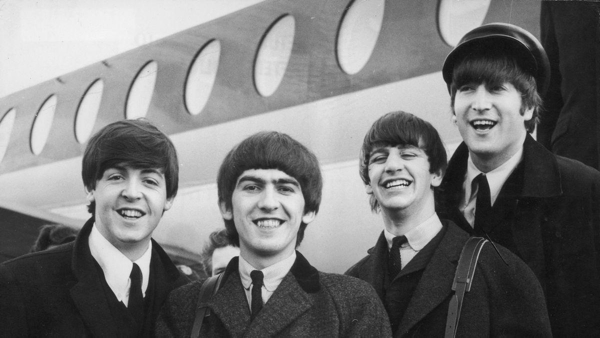Movie review by Greg Carlson
Ron Howard’s awkwardly titled “The Beatles: Eight Days a Week – The Touring Years” covers familiar turf for longtime fans of the band, but the film’s handsomely presented content may appeal to younger generations just discovering the music of Lennon, McCartney, Harrison, and Starr. While the world might not exactly need yet another document in the expanding library of movies about the Fab Four, Howard approaches the theme suggested in the title with the exuberance of a devoted admirer. A more accurate description of the narrative would also include some mention of the incendiary immediacy that accompanied the U.S. wave of Beatlemania.
While Howard accesses sharp transfers of archival film coverage, along with fresh McCartney and Starr interviews, vintage Harrison and Lennon chats, newsreel footage, and some great audio, “The Touring Years” charts a safe course via several talking head encomia from the likes of Elvis Costello, Eddie Izzard, Sigourney Weaver, and Whoopi Goldberg. The best interview subject of the batch turns out to be Goldberg, who speaks from the heart about her unforgettable concert memory. While Weaver and Goldberg are two very well known audience members, it might have been nice to hear from a few non-famous fans lucky enough to have seen a show.
Frequent Lennon and Beatle-focused author Larry Kane, the only broadcast journalist who made it to every single stop on the 1964 and 1965 American tours, is given a significant amount of time to share his own reflections. While Kane has already appeared in several Beatles docs, his proximity to the circus and his unusual role within Beatles history could sustain its own feature-length study. The same could be applied to one of the movie’s fleeting themes: the band’s refusal to play to segregated audiences. Along with comments made by Goldberg, historian Kitty Oliver addresses the appeal of the Beatles to nonwhite listeners.
Aside from the personally exhausting demands of concert performance and travel schedules, Howard covers four oft-cited factors that precipitated the suspension of touring: the outcry over the original Robert Whitaker-shot cover of “Yesterday and Today,” in which the Beatles wore butcher smocks and posed with baby doll parts and cuts of raw meat; the band’s accidental “snub” of Imelda Marcos; Lennon’s “more popular than Jesus” flap; and the recognition that even with the addition of more powerful amplifiers, screaming crowds drowned out the music.
The presumptive focus on live performance receives Howard’s due diligence, but the movie occasionally ventures into broader discussions of the band’s musical maturation and evolution in the recording studio. Accompanied by interstitial album release timeline motion graphics that animate the iconic album covers, the well-traveled sonic journey from naïve mop tops to weary veterans is linked to the mental and physical toll of time spent on the road. And even though this particular Beatles story wraps up when they took a bow following “In My Life” at Candlestick Park on August 29, 1966, Howard can’t resist ending his film with footage of the Apple Corps rooftop set that would mark the final public performance of the Beatles.
